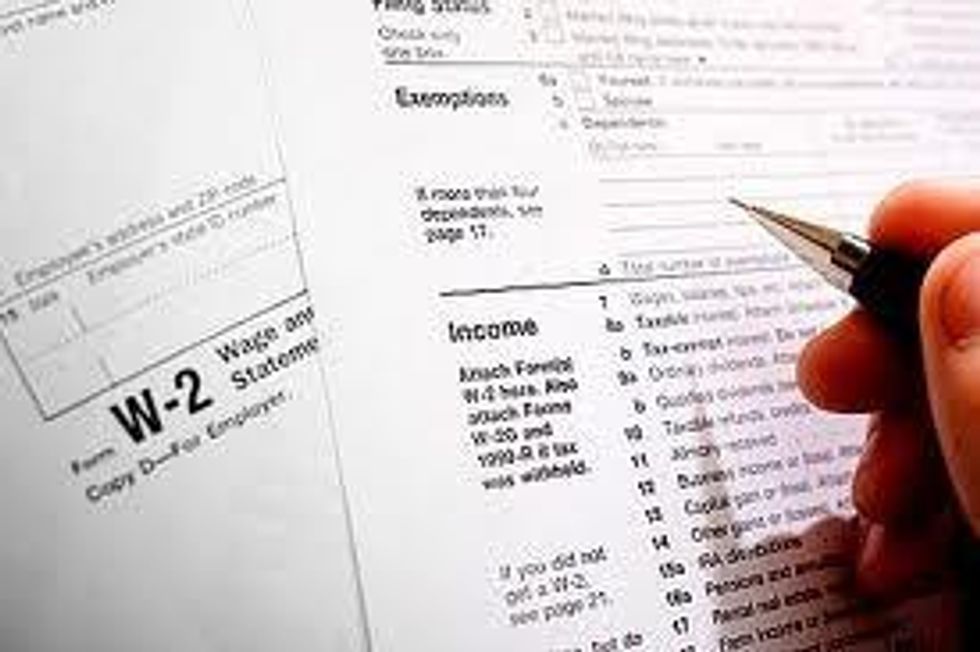How unequal have workplaces in the United States become? Our best answer happens to come from an unlikely source: the Social Security Administration.
Social Security statisticians each year tally up how much compensation gets reported on W-2s, those forms that employers have to file for employees at all their worksites, from mailrooms to executive suites. Social Security reports these numbers out, by income level, once a year -- and in the process paints an incredibly detailed pay portrait of the contemporary American workplace.
For typical Americans workers, this workplace has become steadily less rewarding. The latest Social Security figures, released last month, show annual wages for the typical American worker down $980 in 2012 from five years earlier. David Cay Johnson, the nation's top analyst of Social Security's wage data, last week placed that total in a paycheck perspective.
The median American worker -- an employee at the nation's exact pay midpoint -- labored 52 weeks last year, notes Johnston, "but earned about the equivalent of working just 50 weeks at 2007 pay levels."
Over in America's elite corner offices, by contrast, the pay keeps pouring in. The ranks of Americans making over $5 million a year grew 27 percent in 2012, the new Social Security figures show, to nearly 9,000 most fortunate souls. The actual compensation this cohort collected soared 40 percent over what the $5 million-plus crowd pocketed in 2011.
But these numbers, we need to keep in mind, don't tell America's full income inequality story. Social Security statisticians only tally paycheck data. Their work leaves uncounted income from dividends and interest, as well as capital gains and profits from business operations.
For income totals that take these and other non-wage income streams into account, we need to dive into data the Internal Revenue Service collects.
University of California economist Emmanuel Saez has done that diving. His latest calculations, released this past September, show that taxpayers in America's most affluent 0.01 percent grabbed 993 times more income in 2012 than taxpayers in America's bottom 90 percent averaged.
In 1975, this lofty top 0.01 percent only averaged 114 times the income of America's bottom 90 percent.
These IRS numbers tell us a great deal about America's grand income divide. Do they tell us everything? Not quite. The dramatic IRS figures on high incomes only count what America's rich want the government to count. They don't count all the income the wealthy harvest from secret tax havens overseas.
How much income are these secret stashes generating? We're slowly getting a better idea, thanks in part to a federal amnesty program for tax evaders.
Affluent tax evaders can currently avoid criminal prosecution if they pay up all their taxes overdue on their secret income, plus interest and penalties. With this amnesty program in effect, the Wall Street Journal reports, IRS officials are now seeing "a new rush by U.S. taxpayers to confess secret offshore accounts."
What's driving this rush? To a surprising degree, Swiss banks. Four years ago, the long-standing Swiss bank secrecy wall started cracking when officials at the Swiss banking giant UBS found themselves forced to admit they'd been helping Americans conceal assets. UBS had to pay out $780 million in penalties.
Other Swiss banks, eager to avoid a similar fate, are now pushing their secret American depositors to end the error of their tax-evading ways, and this banker pressure is apparently having an impact.
Just one New York attorney, Bryan Skarlatos, has already handled over a thousand confessions. Skarlatos used to receive just a couple confession calls a week. How he's getting two to three a day. Many of the wealthy Skarlatos takes to the IRS have over $10 million in their secret stashes, a few over $100 million.
We don't know yet how many billions the current amnesty will eventually produce. As of last year, 38,000 U.S. taxpayers had revealed undeclared offshore assets. The declarations from these tax evaders, the IRS reports, figure to bring in $10.5 billion. But this total doesn't cover the recent confession surge.
The final collections will undoubtedly dwarf the sums so far collected -- and fill in still another chapter in America's deeply distressing inequality story.

